Finding the Problem-Solution Fit for your first product is not easy. You have no bearing on the right customer problem, no paying customers, and close to zero customer input while building the product. Unsurprisingly, one of the key reasons startups fail is “trying to build and sell solutions that customers don’t want.” According to a CB Insights report.
The Problem-Solution Fit process is a marathon of identifying customer problems whilst hustling to find your early adopters to get early traction.
Great founders recognise these risks and start small by working closely with a small set of “early-evangelists”. They find long-term customers to grow with.
In this post, I’ll simplify the theory behind Problem-Solution Fit, then I’ll show us a step-by-step process to find Problem-Solution Fit for your startup, and I’ll wrap up with steps to help you find your first set of evangelist customers.
Let’s get started…
Where Does Problem-Solution Fit in Your Startup Journey?
In The Startup Owner's Manual, Steve Blank highlighted all successful startups start with learning about problems:

The first stage of a successful startup begins with finding a Problem-Solution Fit. This is when founders have discovered a deep customer problem in an underserved market. There is a lot of pivoting and working closely with a few sets of customers.
Then they move on to Product/Market Fit, where the startup has found a way to sign up customers, retain them and get healthy revenue in a large enough market.
Lastly, the startup moves into the Scale stage, focusing on expansionary growth and telling even more customers about their products.
So, What Is Problem-Solution Fit?
Problem-Solution Fit (PSF) is when founders have discovered a deep customer problem in an underserved market. This stage is generally very early and often in the seed or pre-seed stage.
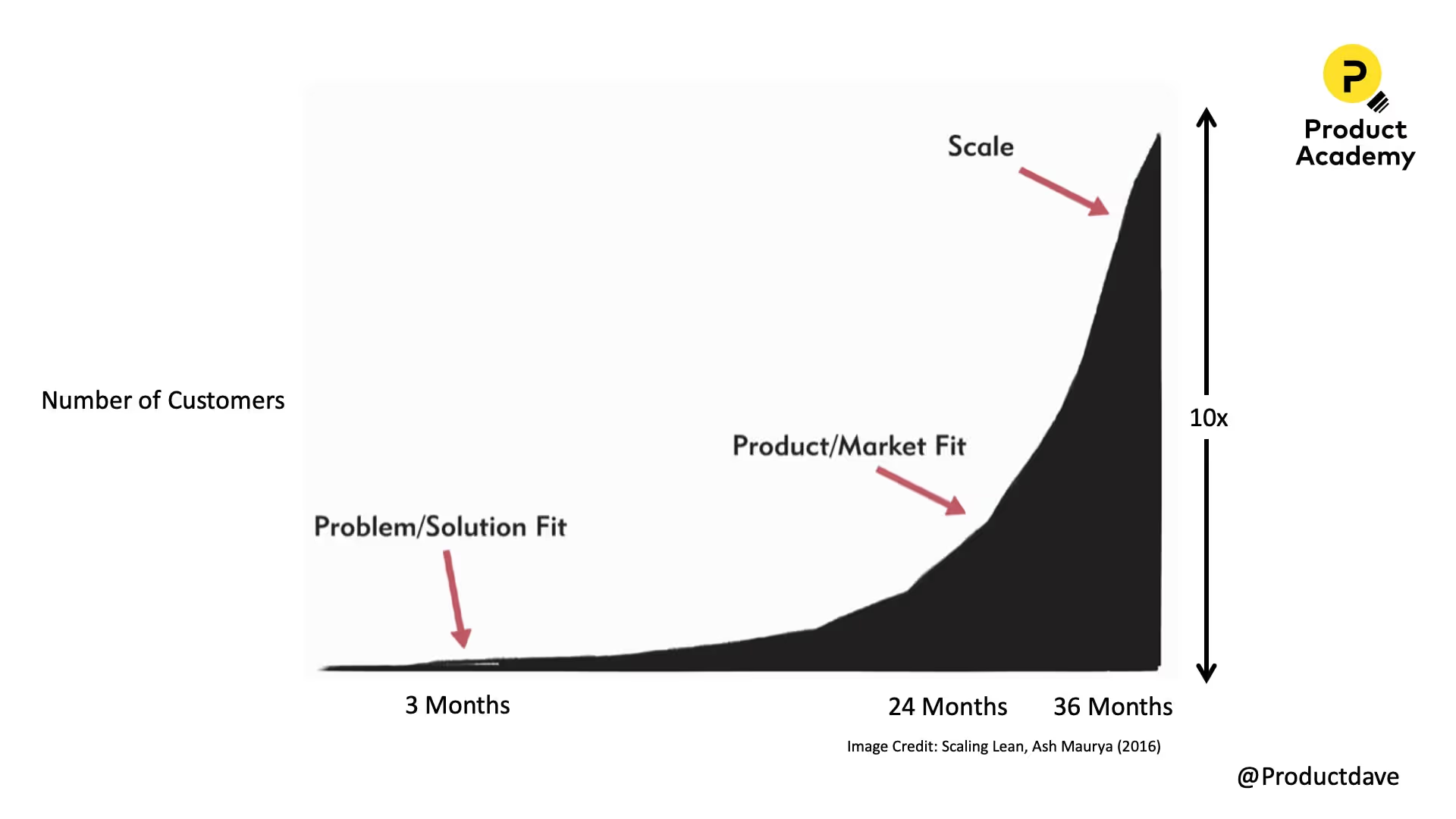
Take Airbnb as an example. The founders identified a problem when they started renting out their rooms to earn extra money. Then, they created a platform to help even more people earn extra income—the solution. Their Problem-Solution Fit moment came when they received their first bookings during the Industrial Design Conference in 2008, then again via the Democratic National Convention in Denver.
They learnt that large events with hotel shortages were their secret sauce for growth. Armed with the problem-solution opportunity, they applied for Y-Combinator and got in. They expanded into New York (where there are always hotel shortages), and the rest is history.
Every successful startup starts from finding Problem-Solution Fit ➡️ then Product-Market Fit ➡️ then Scale.
Where are you now on that journey?
So, How Do You Find Problem-Solution Fit?
As a founder, the moment you’ve thought of your idea, you’ve subconsciously started looking for PSF. The Problem-Solution Fit takes shape slowly from a blurry gassy form to a fluid liquid form and eventually a tangible, solid form. Some founders do this consciously, some intuitively:
Blurry Gas Form:
In this form, founders identify a problem and a solution that makes perfect sense in their minds. They either write it down or keep it in their minds. The product lives in the founder’s imagination, without evidence.
Fluid Liquid Form:
Next, the founders identify a solution and ascertain whether their audience resonates with it. They’ll attempt to attract early-evangelists and iterate through landing pages, demonstrations, or prototypes.
Tangible Solid Form:
In this form, founders leverage demonstrations from digital prototypes, videos, sticky-tape solutions, and experiments to assess the efficacy of their proposed solution. The savvy founders will try to convert some early-evangelists into paying customers.
During these 3 phases, it’s best to use a tool to capture the idea as it evolves from gas, liquid and solid forms. It’s important to highlight the assumptions as the idea evolves and validate them. Here are 3 great tools to help you with this:
The Opportunity Canvas Tool
1. Jeff Patton’s Opportunity Canvas is my favourite tool as it focuses more on product discovery and customer problems.
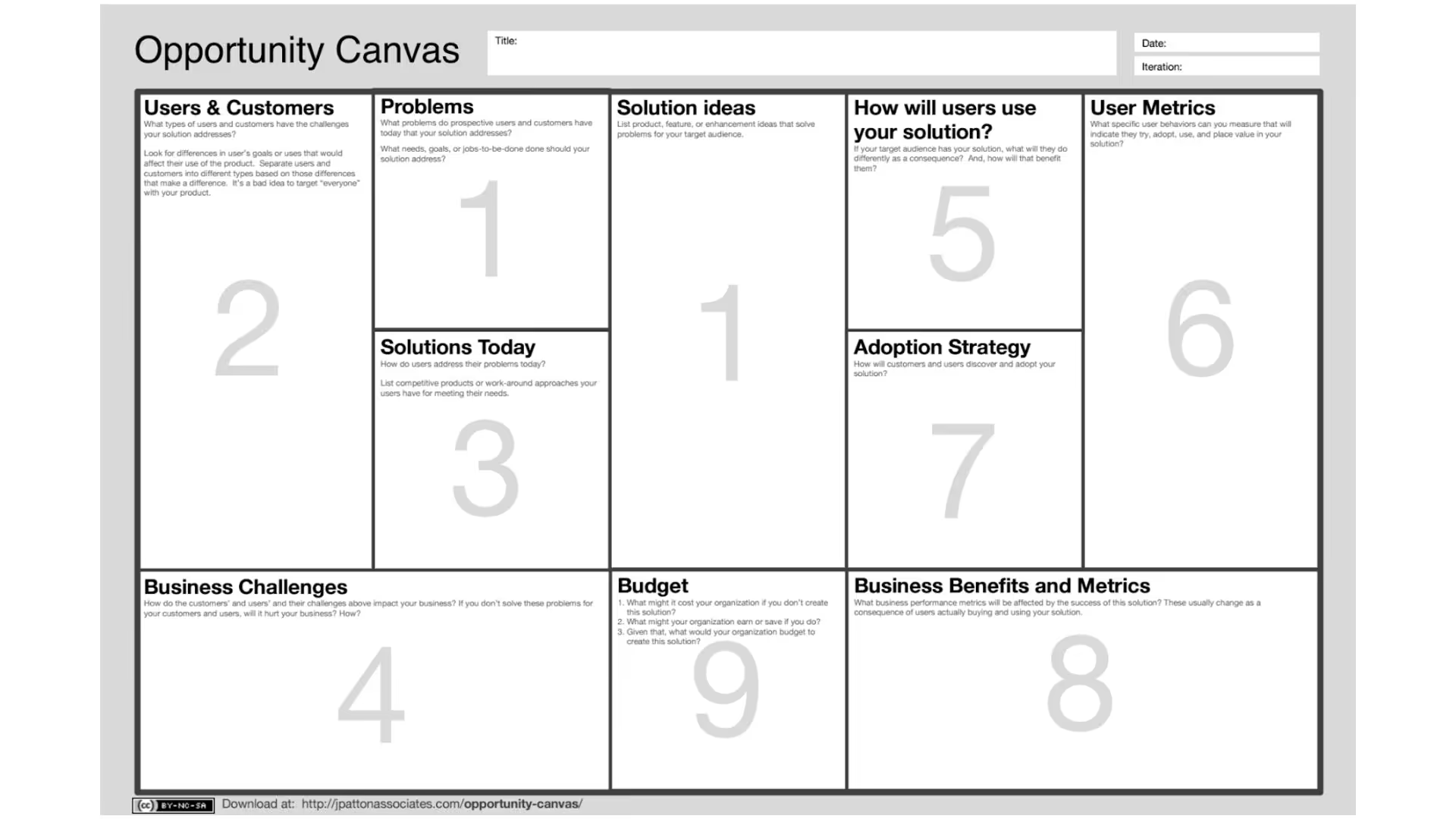
The Lean Canvas Tool
2. The Lean Canvas is always a great choice for startup founders. The Lean Canvas is more holistic for your startup, whilst the Opportunity Canvas focuses more on the product.
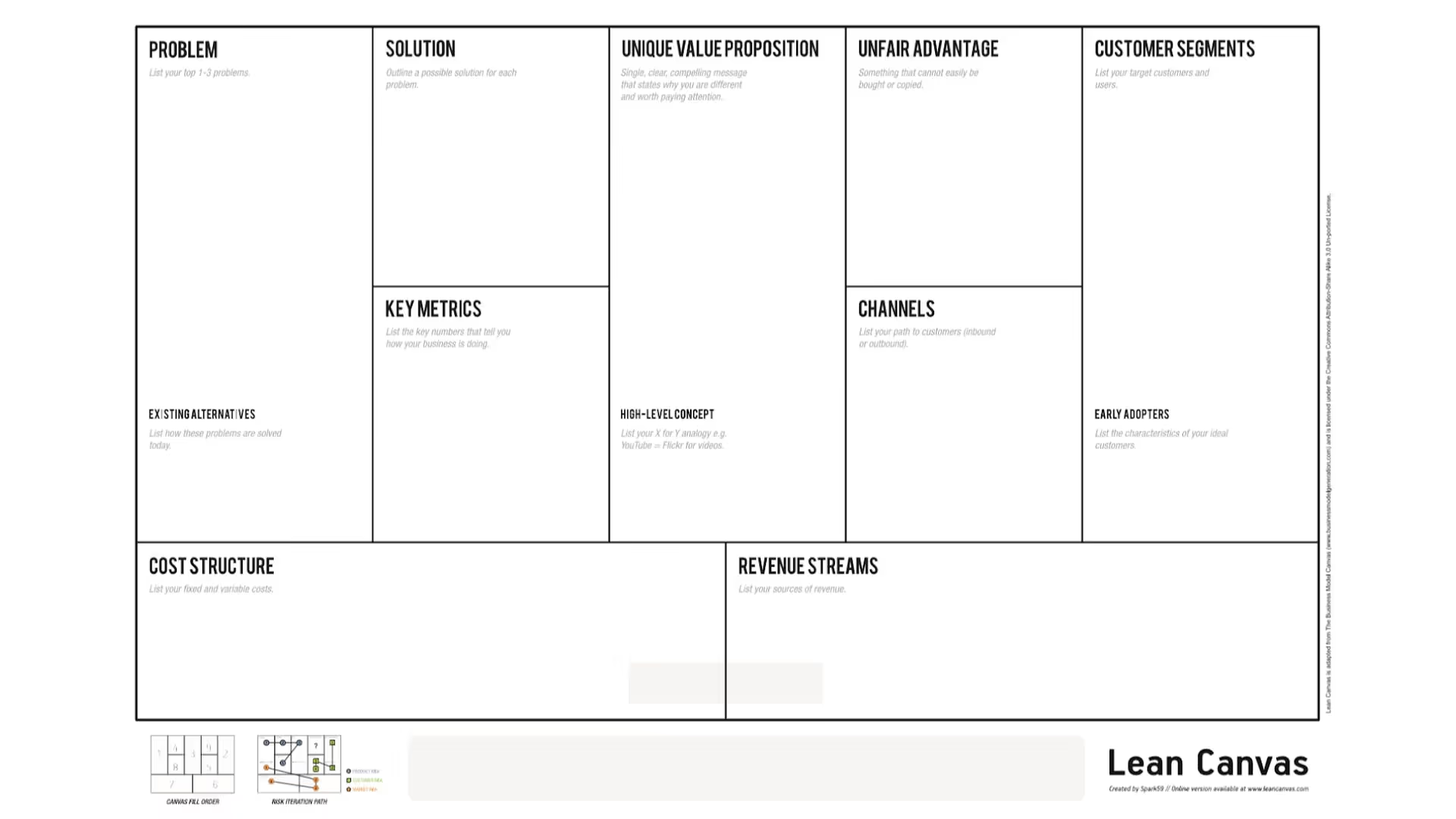
The Business Model Canvas Tool
3. If you’re building a B2B product, the Business Model Canvas is a great option as it highlights partner channels and key resources you need to get you started.
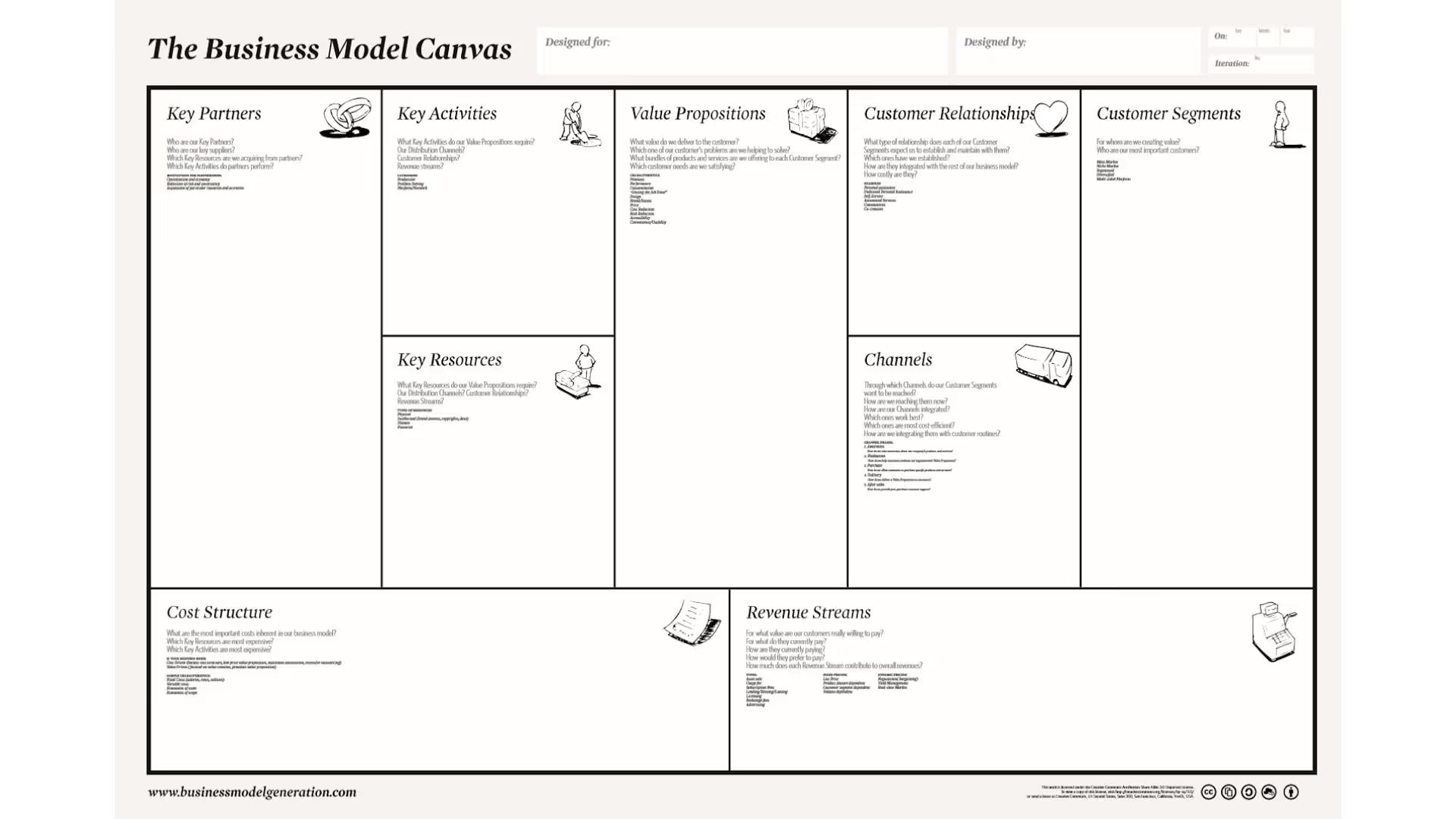
Write down your idea, and spend the time to validate your problem-solution with your early customers. From my experience, it takes 3 -5 rounds of validation to arrive at a clearer understanding of the problem, the customer, and the solution.
Problem-Solution Fit vs Product-Market Fit
Problem-Solution Fit and Product-Market Fit are often a point of confusion for early founders. On the surface, these two definitions are virtually identical = find a valuable product in a big enough market. However, the solutions in the Problem-Solution Fit stage are often different to those in the Product-Market Fit stage.
This is because Problem-Solution Fit focuses on a tiny group of early-evangelists who are comfortable with missing features, as long as it solves their core problem. (Bad UX, no onboarding, and manual work-arounds are part of the fun!)
Whilst solutions during the Product-Market Fit stage focus on selling your product to a larger mainstream market. These solutions need to have a more robust set of features. (Reliability, Security, Reporting, and a decent UX is a common ask for these customers).
Problem-Solution Fit Example
A great example I’ve experienced recently was assessing a content moderation tool for the company I currently work for.
My company is on a mission to create the most trusted destination on the internet. We want to moderate all content hosted on our platform to protect visitors.
Our team scoured the internet to find a tool that fit our requirements. After weeks of searching, we came across a startup that friends in the industry highly recommended. Their product was easy to use, had an AI engine that makes our lives easier, and had a few customers using it - a great demonstration of Problem-Solution Fit!
However, due to the size of our remote-first workforce, information security was a key need for us. We require features like Single-Sign-On and specific security certifications that the startup didn’t offer.
As a result, we ended up choosing another tool with fewer features but focused on a more robust set of features on information security. When we broke the news to the founders, they were disappointed but understood their product wasn’t right for us.
We departed amicably, and the startup will reach out again when they have the security features we require.
Now… could the startup have built the security features that we need? Absolutely.
But more importantly, was my company the right customer for them? Probably not.
They were focused on smaller startups with different sets of needs. To change their product just for my company would’ve meant overheads that were not worth it for them.
The moral of the story is that “everyone” is not your customer. When you’re trying to find Problem-Solution Fit, your customers must be your “early-evangelists”—these are customers that would scream and shout about your product.
Once you’ve found a strong base of “early-evangelists" you can move into a bigger market to find Product-Market Fit.
Here is a quick comparison between your PSF customers vs your PMF customers:

Selling to your early evangelists
Your early-evangelists are the catalysts of your product. These customers are willing to risk buying an unfinished product to gain an early competitive advantage or purely for bragging rights. (P.s. Bragging rights are never long-term strategies but it can get you off the ground).
- In the B2C space, they might be your techy friends who are always trying out new things.
- In the B2B space, this could be an executive testing a new business opportunity or a head of a function trying to solve a burning problem.
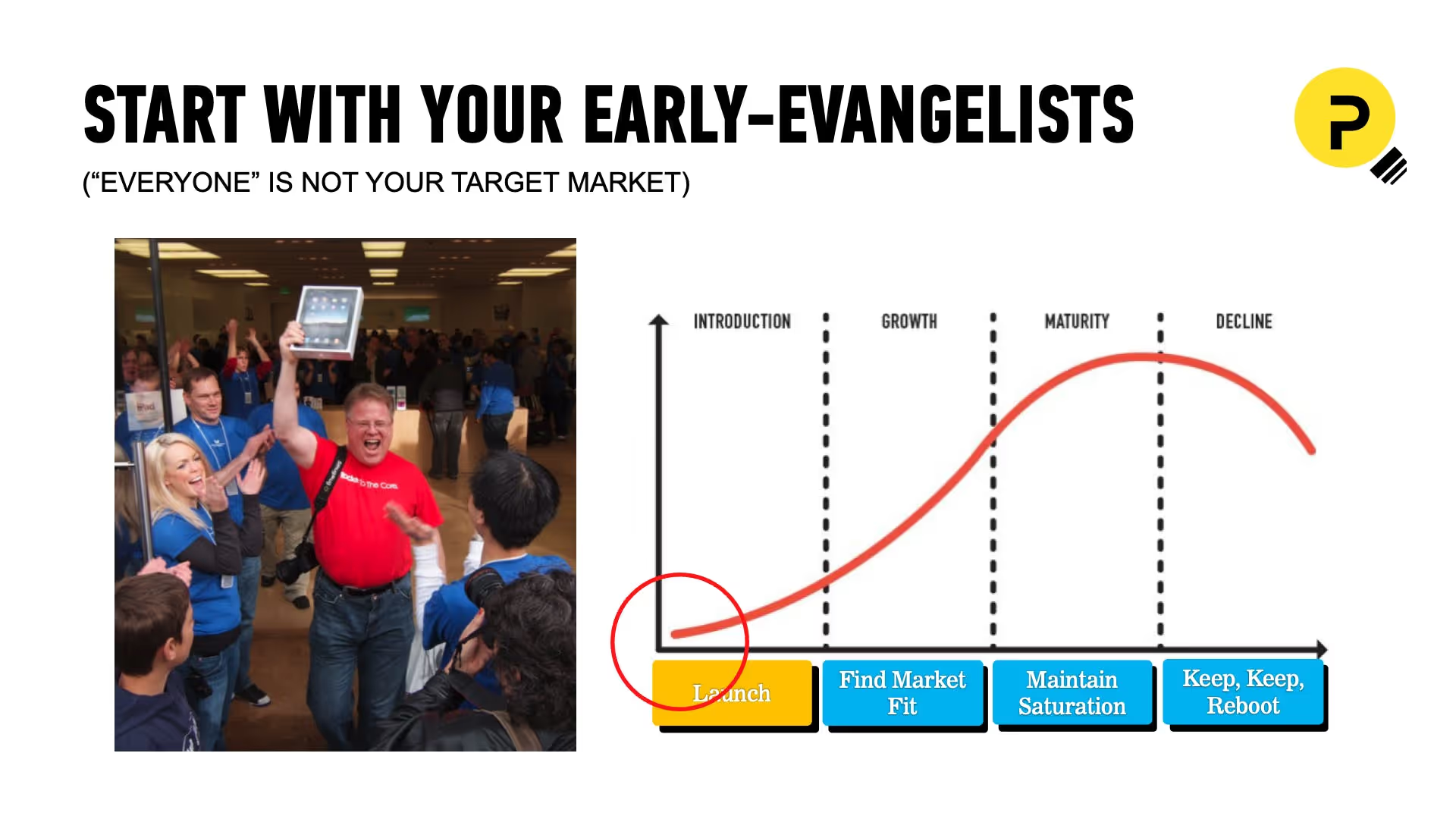
The ultimate test for early-evangelists is their willingness to pay for your product. When presenting your product idea to your ‘evangelists’— don’t be afraid to ask for a sale. If there are signs of hesitation (from both sides), you are not solving a problem deep enough. Go deeper and ask: “What would make you pay a small deposit for this product?”
Early-evangelist hierarchy of needs
Like a product, the early-evangelist goes through 5 stages of pain. The ideal customer is someone who is at the highest level and has the budget ready to buy something to solve their problem.
These are the five stages of pain your early-evangelists goes through:
- Pain Level 1: They have a problem or a need
- Pain Level 2: They understand they have a problem (or you’ll need to help them discover a problem)
- Pain Level 3: They are actively searching for a solution to the problem, and have a timeline for finding it
- Pain Level 4: They problem is so painful that have cobbled together an interim solution
- Pain Level 5: They have committed budget or can quickly acquire budget to purchase a solution
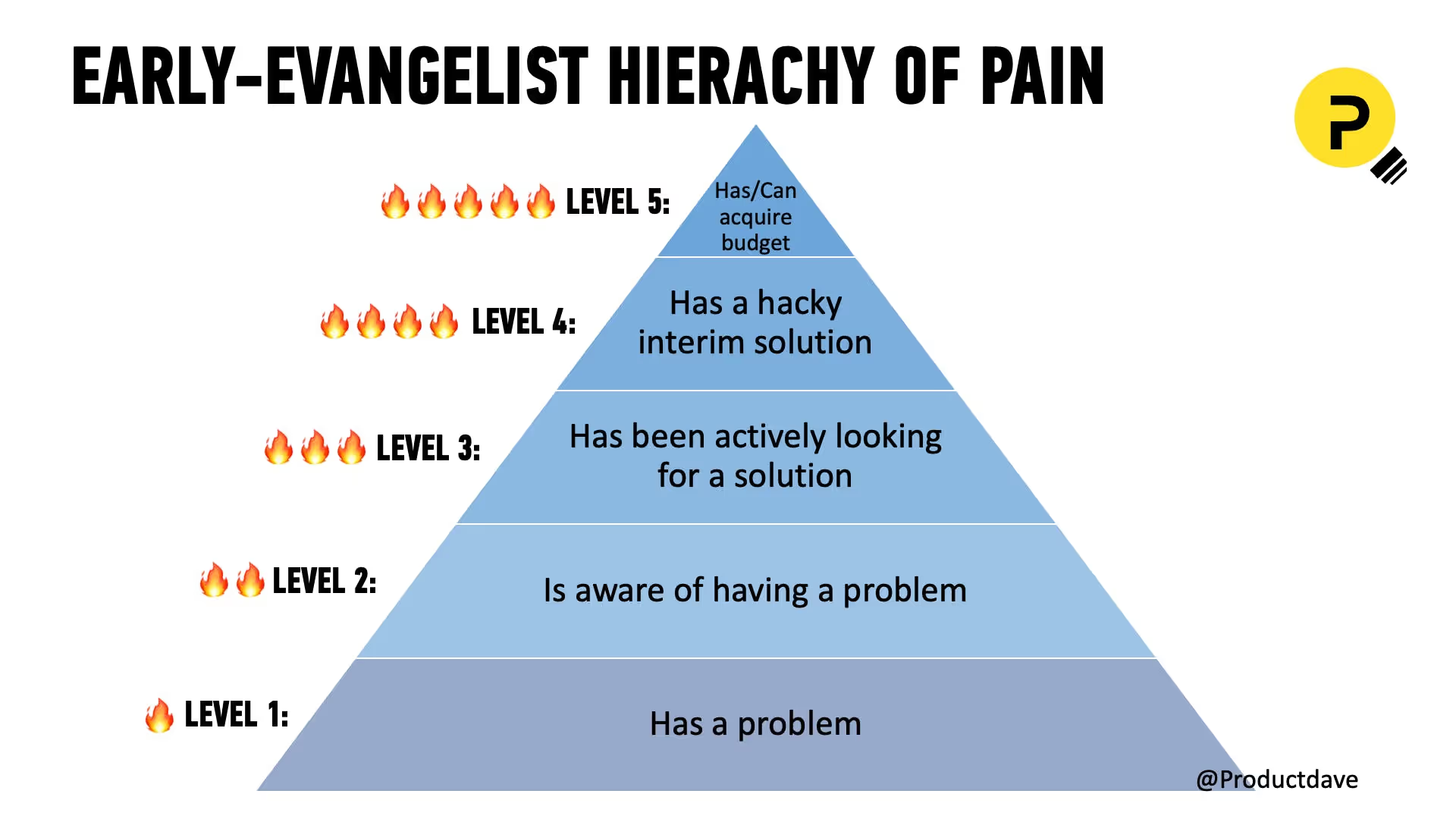
The closer to the top of the pyramid, the more likely they will buy your product, and even spread your vision for you.
So, where do these early evangelists hang out?
Let’s think about the last time you were in a market to purchase a property or looking for a place to rent. Where did you go?
You’d probably start with a google search on a suburb or use a real estate website. You might ask your friends and family or even walk into your local real estate agency.
If you’re looking for your early-evangelists, they won’t come to you directly—you need to go where they are looking. Cold-calling rarely works because it’s hard to identify your customer's pain level in one single call. Better to invest your luck in one of the five strategies below.
These are 5 Key Strategies To Find Early-Evangelists:
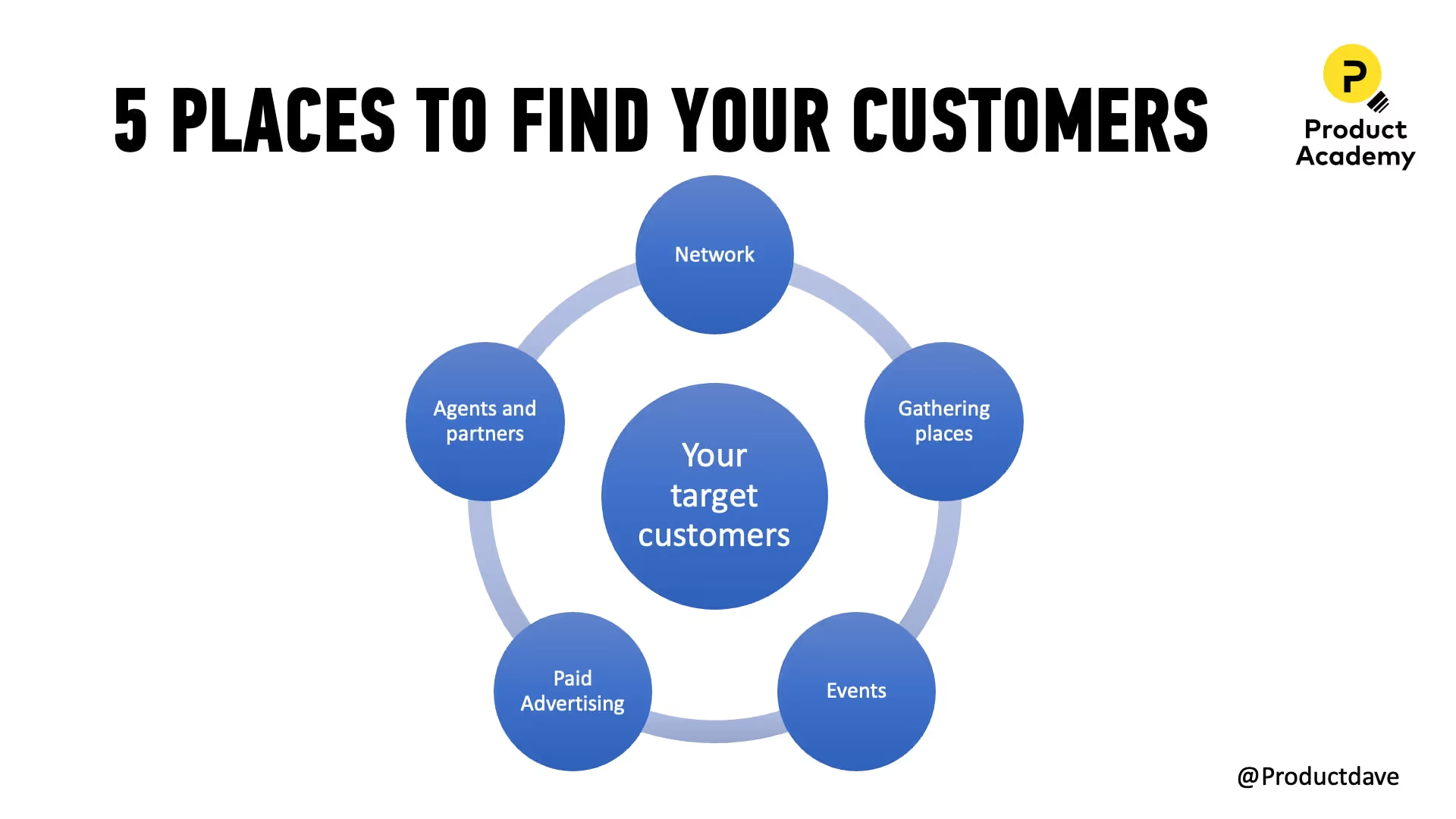
1. Leverage your network
Ask your existing friends, family, colleagues, investors or even LinkedIn to connect with people experiencing the problem you’re trying to solve. Offer to advise, free work, kudos, or anything your network finds valuable in return.
Practice give-give-get. Always give more value to your network than you get from them, and people are willing to help you.
2. Find the virtual “Gathering places”
These are online or offline gatherings where your early evangelists go to find a solution to solve their problems. Places like forums, social media groups, Twitter, slack groups or even shared offices.
Be active and generate conversations around the problem you’re trying to solve, and of course, give-give-get.
3. Events
Attend conferences, seminars, trade shows and meetups where your early-evangelists go for pleasure or work. Or, if there are no events for your problem space, create one yourself and use your network and the ‘gathering place’ above to spread the word.
You’ll make a conversation topic that shows you deeply care about helping your customers solve their problems.
Pro Tip
Find a way to access the attendees' list so you can reach out beforehand and set up 1:1 time with potential prospects. The networking starts BEFORE the event begins.
4. Paid advertising
In some instances, paid advertising might be a great way to get your startup in front of people. I’m broadly using the term ‘paid advertising’ to involve more than just google ads. Think about paid sponsorships, paid ads in a newsletter, paid influencers, or anything that you can use the money to acquire attention. Make sure you have a clear “what’s-in-it-for-me” call to action to turn your prospects into conversations.
5. Agents, partners or consultants
For more complex industries, you might have to go through agents, consultants or partners that already have an established footing with your customers.
A typical example is breaking into the enterprise sector would require you to go through a few ‘approved’ vendors for you to have a ‘ticket to play’. You can sell your product through existing vendors/consultants or build apps through a marketplace like Slack Apps or Salesforce Marketplace. Partnerships are great for getting your foot in the door and finding early customers.
Play long-term games with long-term people. Grow with your early evangelists, and they’ll spread your product for you.
Finally, develop the product for the Few, not the Many
The sweet spot for startup success lies in the intersection of a meaningful problem and a right solution. In a startup, the first product is not designed to satisfy a mainstream customer, and that’s okay. No startup can afford to build a product that suits every customer and be successful at it.
All great products starts with finding a Problem-Solution Fit. Be prepared to pivot, persevere and even kill off bad ideas. Always remember:
- You’re creating a product for your customers, not your ego.
- Find your early-evangelists to pay for the problem you solve, and solve it well.
- As a founder, time is your most valuable resource, not money. Do everything to preserve it.
On that note, happy building!












